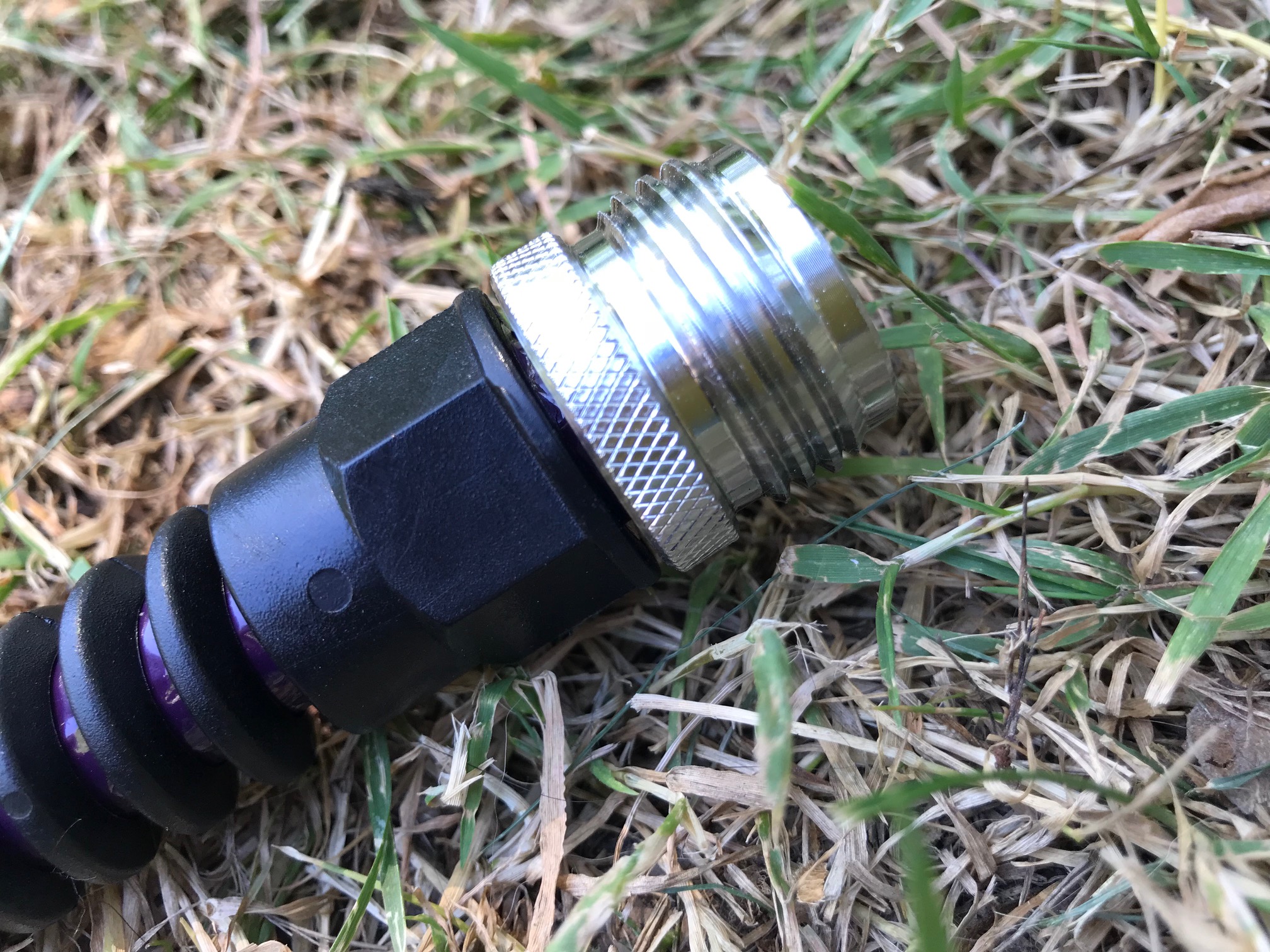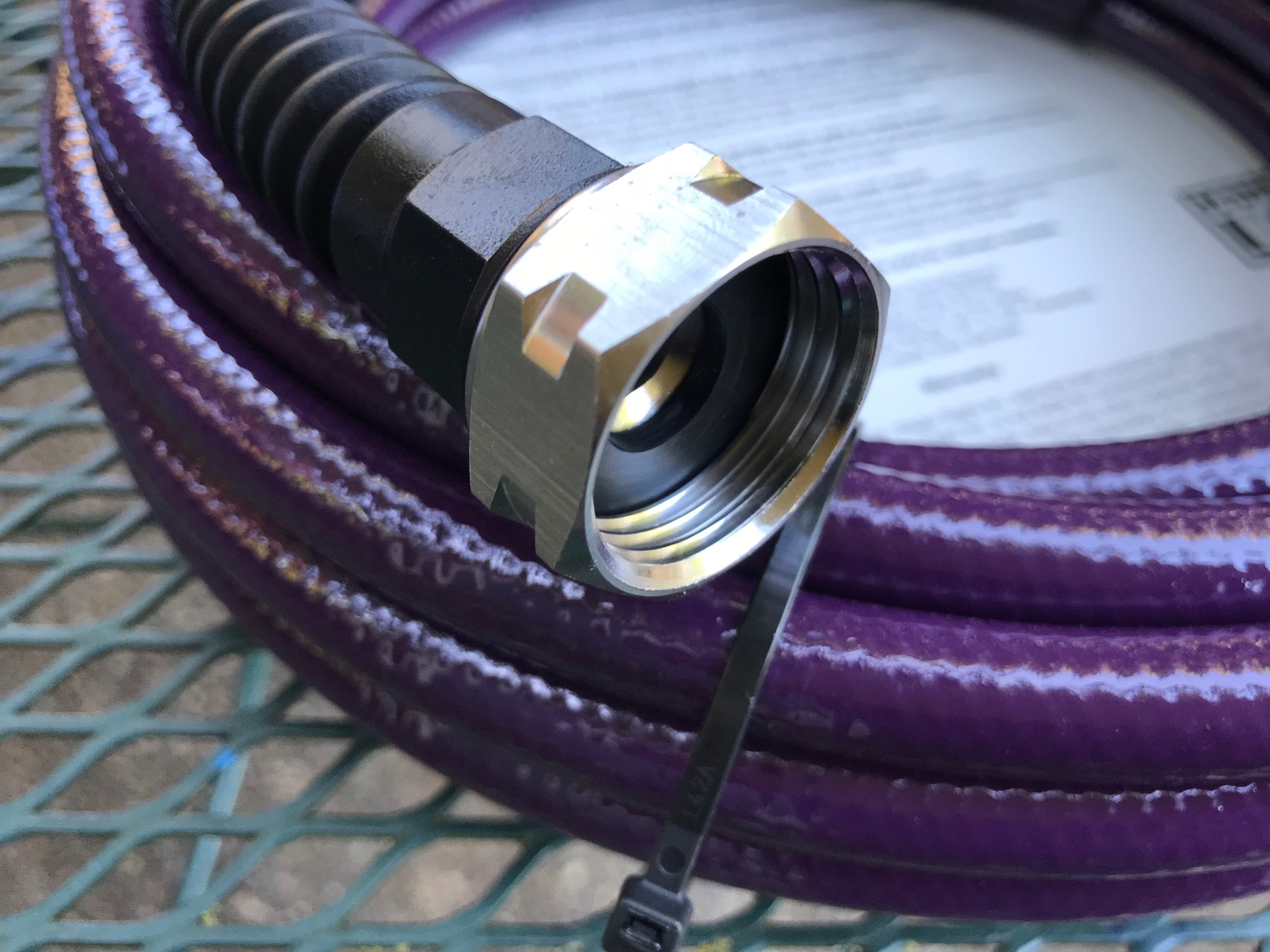#AskTamara: What is stainless steel? (This U.S.A. made Lead-free hose has all stainless steel hardware!)
Introduction (for those new to this website):
Tamara Rubin is a federal-award-winning independent advocate for consumer goods safety and a documentary filmmaker. She is also a mother of Lead-poisoned children, her sons were acutely Lead-poisoned in 2005. Since 2009 Tamara has been using XRF testing (a scientific method used by the U.S. Consumer Product Safety Commission) to test consumer goods for toxicants (specifically heavy metals), including Lead, Cadmium, Mercury, Antimony, and Arsenic. All test results reported on this website are science-based, accurate, and replicable. Items are tested multiple times, to confirm the test results for each component. Tamara’s work was featured in Consumer Reports Magazine in February of 2023.
Question: What is stainless steel?
Answer: There are actually multiple answers to that question — as there are a lot of different grades of stainless steel.
One of the most common grades of stainless steel (for household uses including cookware/ kitchen items) is “304.” When something reads as “304 Stainless” (with the XRF), I generally consider that a very good thing, because 99.9% of the time it means I am testing an item that does not have any neurotoxic heavy metals (no lead, no cadmium, no arsenic and no mercury – either as constituent ingredients or contaminants) in the product! (This baby bottle is an example of a rare exception, a stainless steel bottle with a solid lead sealing dot.)

As an example, the elemental (metals) made up of 304 (Grade 304 Stainless Steel) can look like this when an item is tested with an XRF instrument (with a one-minute test):
- Chromium (Cr): 150,100 +/- 1,100 ppm
- Copper (Cu): 5,593 +/- 568 ppm
- Nickel (Ni): 92,100 +/- 1,700 ppm
- Iron (Fe): 728,100 +/- 2,500 ppm
- Vanadium (V): 950 +/- 191 ppm
- Molybdenum (Mo): 1,959 +/- 146 ppm
- Manganese (Mn): 18,100 +/- 1,300 ppm
This particular reading set is for the male end of a lead-free hose by Water Right, Inc. (pictured here) made of 304 stainless.
The most important characteristic for identifying whether or not something is a specific grade of stainless steel is the ratio of chromium to nickel to iron, as those are the main components of most stainless steel alloys.

As an example to show the range of readings for the same grade of stainless steel (304), below is another set of readings (for the other end – the female end – of the same hose).
Note that while some ingredients are intentional components of the grade of stainless steel, other metals (seen at very low levels) are more like to be coincidental contaminants from the manufacturing process. Not all “contaminants” are considered toxic.
In general, to my knowledge, most grades of stainless steel are considered non-toxic, with many designated safe for food use – and some even considered safe for medical use applications (such as surgical implants).
Female hose end, as tested with an XRF instrument.
- Chromium (Cr): 160,100 +/- 1,100 ppm
- Tin (Sn): 113 +/- 54 ppm
- Copper (Cu): 6,042 +/- 584 ppm
- Nickel (Ni): 88,100 +/- 1,700 ppm
- Iron (Fe): 717,000 +/- 2,500 ppm
- Vanadium (V): 1,035 +/- 207 ppm
- Cobalt (Co): 4,328 +/- 1,467 ppm
- Manganese (Mn): 21,300 +/- 1,300 ppm
So for 304 stainless steel, we have the following three characteristics that are expected:
- Nickel in the 82,000 to 95,000 ppm range
- Iron in the 700,000 to 750,000 ppm range
- Chromium in the 150,000 to 160,000 ppm range
While I do not currently have any concerns about toxicity in food-safe stainless steel, some people do. I have heard of folks voicing concerns primarily about a specific nickel allergy, or possible leaching of stainless steel elements – like nickel or chromium – into food or beverages contained within stainless cups, water bottles, or other vessels or food cooked in stainless pans.
My only real piece of advice when it comes to stainless used for food applications is not to use stainless steel beverage containers with highly acidic beverages (like orange juice or lemonade), and when using a stainless water bottle, be sure to rinse well before each use and replace the contents daily if they are not fully consumed.
Here is a link to the Stainless Steel category of items on my website. As these items are generally (as a category) Lead-free (with exceptions being – for example – stainless steel baby bottles with a solid lead sealing dot), I don’t always list the full elemental/metal breakdown for the stainless components of the items I test. However, I will work toward creating an article for each type of stainless steel to help folks evaluate the potential implications of the use of stainless in their lives.
As always, please let me know if you have any questions!
Tamara Rubin
#LeadSafeMama
Click here to chip-in in support of my independent consumer goods testing
and childhood lead poisoning prevention advocacy work.
Never Miss an Important Article Again!
Join our Email List









Is it safe if it says stainless? Or if it says 18/8?
Hi Tarin,
In most cases yes something marked stainless is going to be free of Lead, Cadmium, Mercury and Arsenic. However it depends on what it is and how many other components of different materials it has. What is the object? Do you have a link or picture you can share?
Tamara
Do you know if Lindys stainless steel products are safe? A lot of my dinnerware (plates, cups, etc.) are this brand.
Tamara, I am curious about aluminum…your testing results don’t generally include aluminum. I recently purchased an Instant Pot on Amazon (supporting your work by shopping in your Amazon store) and was disappointed to find that the inner Stainless Steel vessel is non magnetic (i.e. aluminum as I understand it, is not magnetic…nickel, chromium and iron are). So back it goes. On a positive note, on your recommendation and using the links on your site, I have purchased 2 of the Norpro Krona 8 cup multi pots and the SOLIDTEKNICS nöni stainless steel and nickel free pans and they *are* magnetic (i.e. low (or no?) aluminum). What are your thoughts on this?
The common “stainless steel” ALLOYS are NOT ferromagnetic. Some people carry a small magnet, when shopping for stainless steel parts at the hardware store. A steel bolt, from a bin labeled stainless, that sticks to a magnet like a carbon steel nail is mislabeled and lands on a shelf (not back in the bin).
Stainless steel usually used in cookware is Austenitic steel – it’s a different crystal structure than the magnetic ferric steel. Only do stainless steel knives often have ferritic stainless. The Austenite helps increase the stainlessness by a lot, and things like chrome and nickel serve to make the austenite crystal structure stable at lower temperatures, to well below room temperature. So not all steel alloys are magnetic, some partially so like knives or sometimes forks.
I am likewise interested in the lead-free safety of Lindys stainless, specifically the 9″ pie plate. I looked up the Pyrex glass ones you recommended, but read a ton of reviews of exploding pie plates. So I did more research and uncovered reports of the Pyrex brand having changed the glass formula from the old borosilicate glass to a soda-lime silicate that is subject to explode when undergoing thermal shock. The reports, I believe, are as real and frightening to me as your reports of lead in cooking products. All I want to do is bake a lead-free, arsenic-free, gluten-free, dairy-free “vegan” Key Lime pie preferably also without the plate exploding… I’m kidding, but kinda not. No matter what I do, I seem to run afoul of some other challenge. Finding lead-free cooking implements using your site… trying to get stainless so the plates don’t explode, and I legitimately looked up sweetened condensed coconut milk, plant-based egg yolk, rice flour, etc.
Hi Tamara,
I want to choose stainless steel bottle or thermos for my daughter.
If the says: its made from stainless steel 18/8 or 18/10, is it ok? Or should I ask about lead, can it be in it?
Thank you!
Hi Lead Safe, As always a thorough expose giving full education to people who unaware they are being intoxicated as they eat. I would love to see you hooked up with RFK Jr. His Defender show has many guests in the field of environmental contamination: food,farmland etc. I have never seen an expose on the dishwear/cookwear on that show. I think you would get great exposure and support there. RFK Jr. is also a lawyer with high ethical character. Glad to see the stainless steel exposed. I learned about it back when I was looking for a cat bowl for my beloved cat in 2014. PET BEDS,BOWLS and TOYS are something I’m sure “you” have already in the works. ICOULD NOT STAND to see what I saw with the bowls mostly. HORRIBLE toxicity . I finally decided on Pet Fusions cat dishes supposedly made from “tested” extensively for harmful contamination. Mainly Cobalt which comes from recycled Stainless in the medical field. Keep on truckin. You are a great warrior on the front of this situation!
I’m afraid RFK Jr. is incredibly unscientific and promotes things that are actively dangerous to people’s health like saturated fats, unpasturized dairy, and falls for scams himself like methylene blue. He’s caused sweeping defunding of agencies that test for safety of food and research into what is bad for us. Do you call that ethical?
There is little to be found as far as ill tidings on Stainless steel in the scientific literature. Cobalt from the medical field is often the very radioactive cobalt 60 for chemotherapy and is strictly kept track of these days, and the few incidents have made disaster headlines. You can test radioactivity of materials and stainless is about as passive as it gets.
I just bought these exact hoses and the fittings are aluminum now. Is it still safe?..
I am also curious about these Water Right hoses currently on the market. The stainless fittings don’t seem to be available anymore, and I can only see “lead-free brass” available. The company says the brass is double chrome plated and 99.9% lead free on their website.
yes – I no longer have a relationship with them because they stopped consistently making the lead-free options.
T
Is there a lead free hose option that you could recommend?
I just noticed the same thing (fittings are no longer stainless steel). Is there a different brand that you recommend?
Eley hoses are supposedly 100% lead free. Might be a good candidate to test and confirm.
Thank you for that information! I will keep that in mind for upcoming testing we may be doing!
Tamara